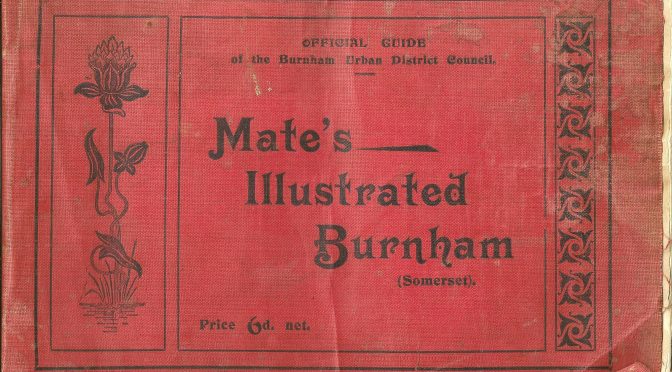Burnham enjoys by reason of its advantageous position as regards the sea, an immunity from fogs and damp weather……The general disposition of the climate in winter as well as in summer, is clear sunshine, fresh air; and languor, enervation, or ennui from climatic incident are unknown to its inhabitants……there are possibilities of canopy formed by remainders of agriculture and by the dexterity of the guardians of the town, in the form of delightful trees, such as to amply protect those who are unable to revel in the sun bath.”
“The town is almost unequalled in its healing powers; it is far famed as a resort meet for the tending and upbringing to vigorous manhood and womanhood of those children, either delicate by constitution, or born in tropical climes and sent to England to seek new chances of life itself. Much of its prosperity has been due to th”e ease in locomotion possible to the aged. Its death rate seems incredibly low. It is a rapidly disappearing quantity according to recent statistics.”
“By a happy wisdom the town is so built, as a high medical authority once said, that every dwelling receives the inestimable boon of fresh air, with its attendant and inevitable presentation of health therewith. The streets are broad and open and sufficiently elevated to be always dry and clean. The soil is dry, and so admirably drained that rheumatism and kindred troubles are practically unknown. Quiet beauty and absolutely perfect health properties have long since won for Burnham its enviable reputation of possessing recuperative powers almost unparalleled in the knowledge of the faculty of the West of England.”
“When the Summer is at hand, the sands are a merry scene. Those who want noise and rabble must go elsewhere; but to those for whom refinement is always associated with the first requirements of a healthy holiday, Burnham has an undeniable charm. There are no quicksands, no shelving and dangerous coasts, no dangers for children, who can roam and play on the clean hard beach in absolute safety; no danger, too, for the bather, who elsewhere may have been tricked into a risk of his life by the deceptiveness of the locality.”
~ from Mate’s Illustrated Burnham 1903

Ahh… those were the days!
Below is a map of points of interest, from around the same time, discovered amongst the Dupuis Diaries. The inclusion of the bandstand on the Esplanade dates this between 1902 and 1911. For an account of life in Burnham during the first decade of the 20th century see ‘The Lawrence Family’.
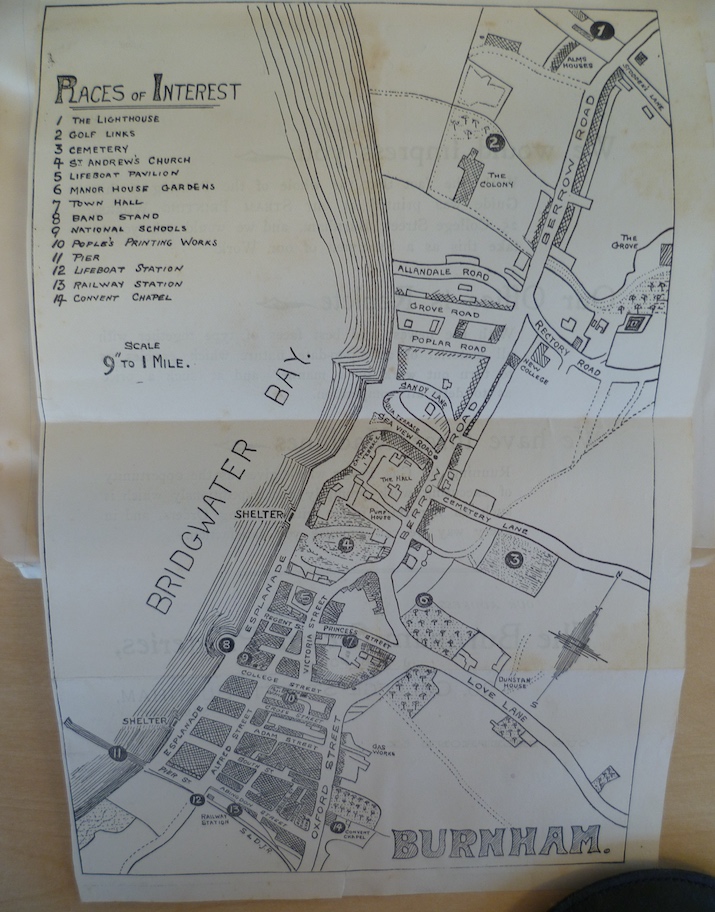
Next is a video clip of Francis Farr-Cox showing his copy of a Burnham Guide of 1859.
SOME EARLIER ACCOUNTS
Extracts from an essay in the Bristol Mercury 5th December 1863:
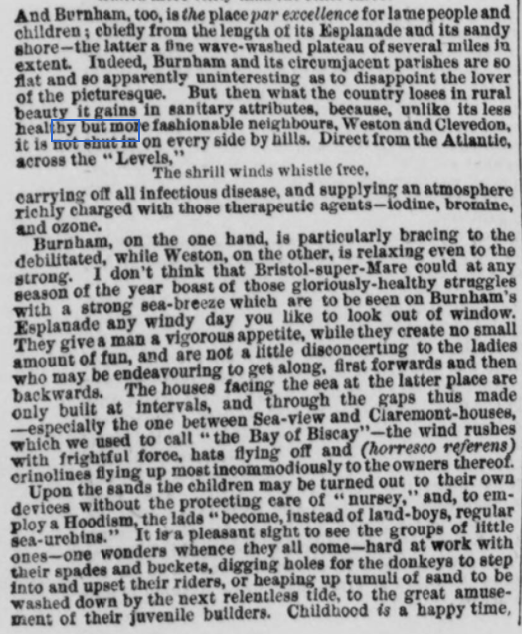
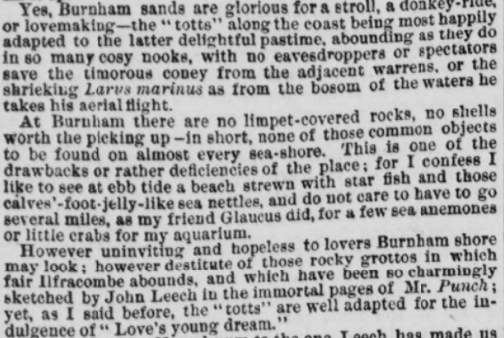
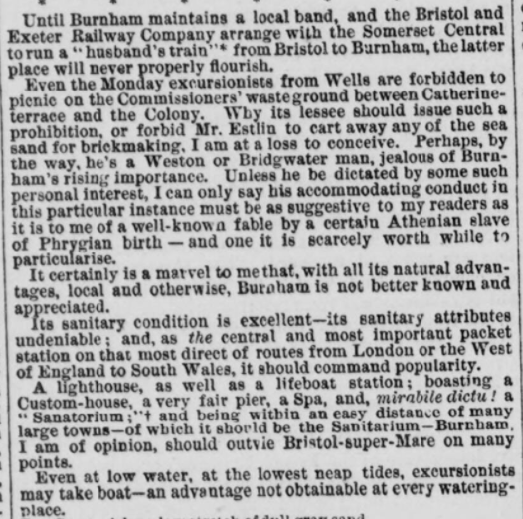
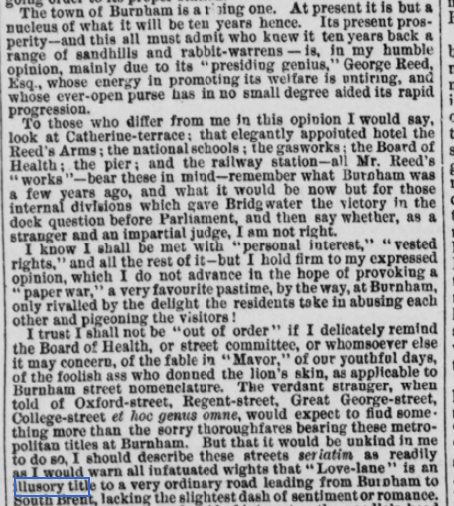
A retrospective entry in the Dupuis Diaries about 1865, a couple of years before Rev. Dupuis moved to Burnham:
“Sometimes came to Burnham on excursions, once saw old Vicar WIlliams back at a funeral. The first visit to Burnham, returning from ordination at Wells, changed [train] at Highbridge, & having to wait, walked in as far as the Queen’s Hotel (the the Reed’s Arms) & looked down the Esplanade, very empty and desolate in Winter. It was a frosty evening in December just before Xmas. Looked into Highbridge Church, where they were decorating.”
From the Weston-Super-Mare Gazette 29th Sept 1888:
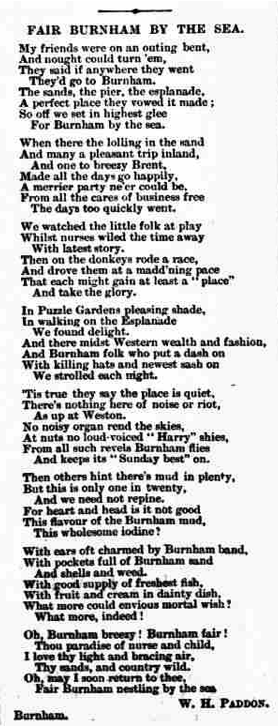
Imitating many of the fashionable ‘watering places’ of the 18th & 19th centuries Burnham produced its own seasonal ‘visitors list’. This detailed all the ‘high class’ visitors who you might wish to be seen ‘taking tea’ with during your stay, and where in town they could be found . During the late 19th century it was published by the Bridgwater Mercury. The one below is from 1887 and was found amongst the ‘Dupuis Diaries’ materials.
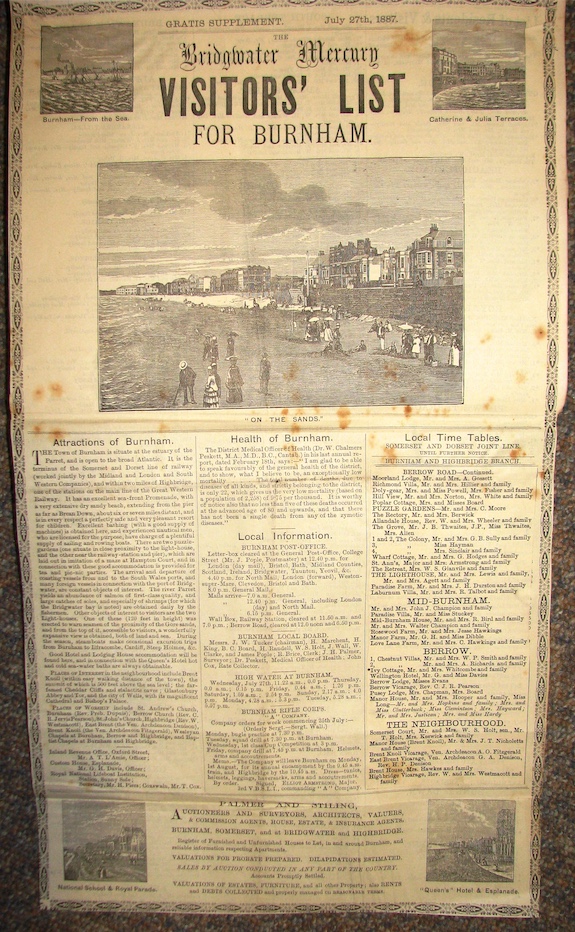
Burnham in 1903:
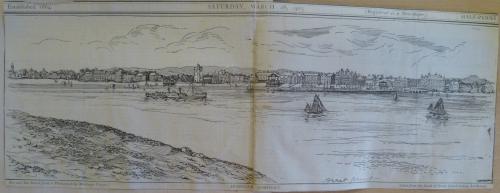
There are accounts which show that at the peak of the summer season Burnham attracted so many visitors that the locals would rent out every spare room. They would decamp with their own families, possibly to shacks and tents in the ‘Chinatown’ area behind what is now South Esplanade. 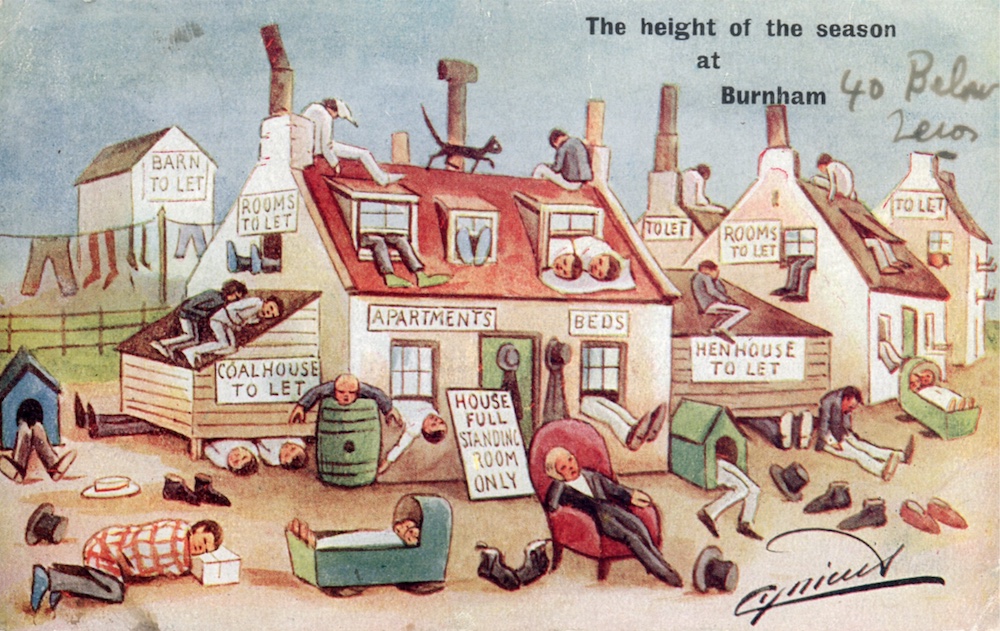
Retrospective accounts of Burnham in the early years of the 20th century can be found here.
WHEN DID BURNHAM BECOME ‘ON-SEA?’
From Burnham Gazette 6th Jan 1917:
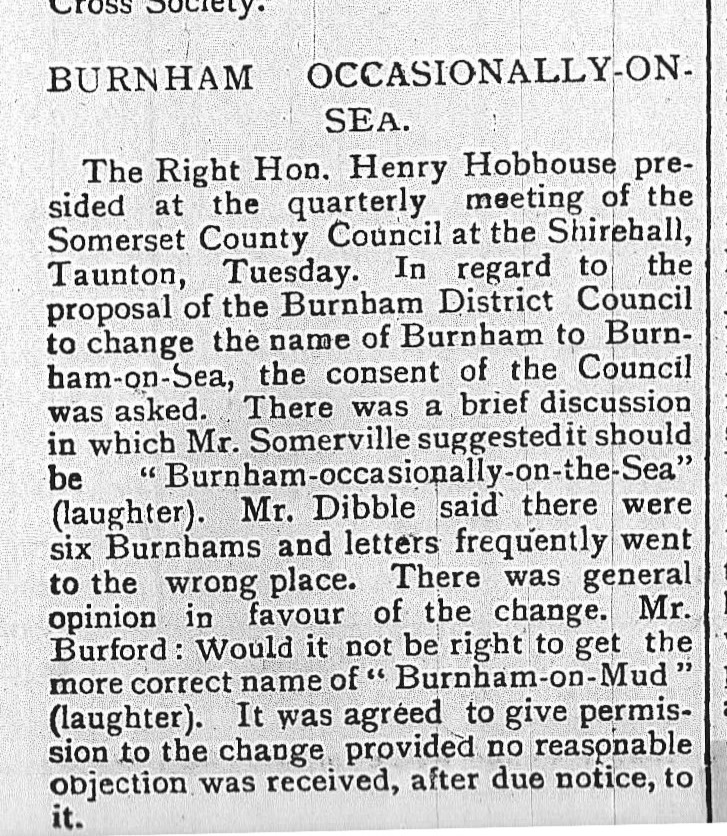
A slightly earlier reference to this change appeared in the Western Daily Press of December 14th 1916.
1920’s & 1930’s: FRANK’S STORY – follow this link for an account of one boy’s life in Burnham during this period.
Follow this link for an account of Burnham between the wars by Mervyn Temlett.
From the Burnham-on-Sea Guide of 1935:

From The British Rail Holiday Guide, South West, 1952 (courtesy of Ann Popham):

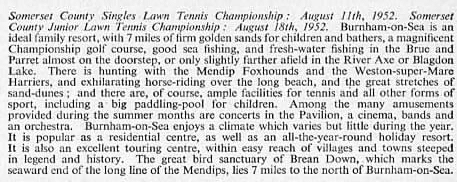
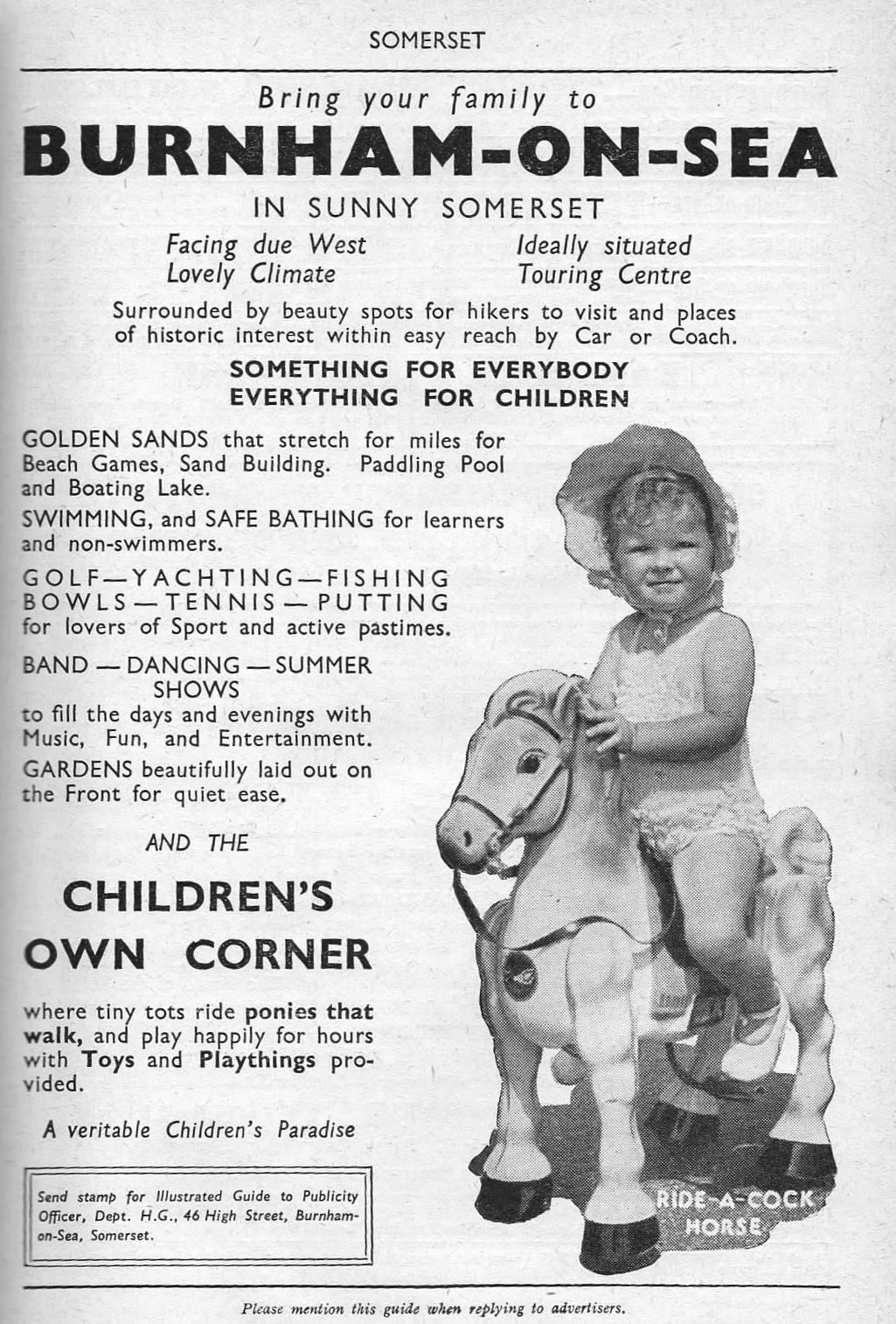
BURNHAM 1966 – a report from Points West TV programme can be found here.
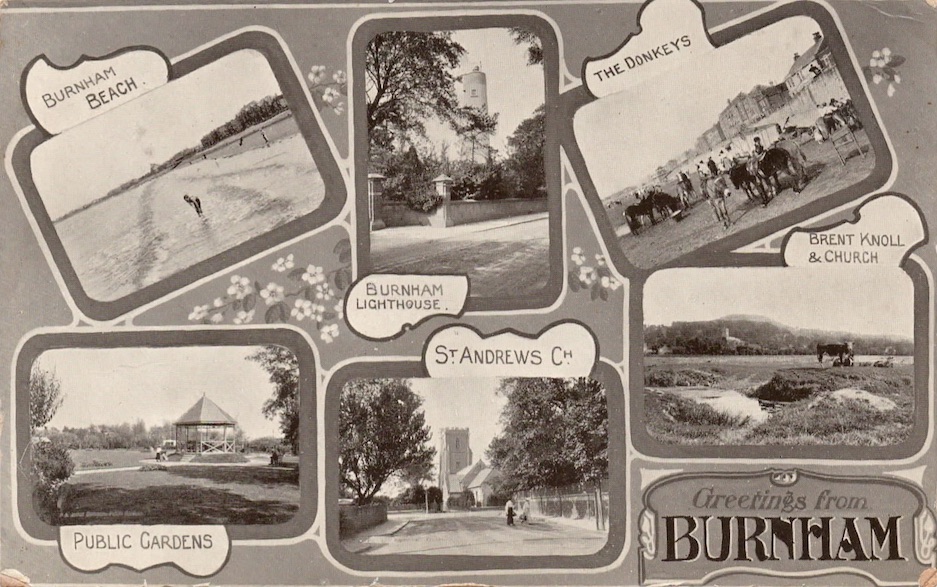
Postcards publication date unknown. Scans courtesy of Ann Popham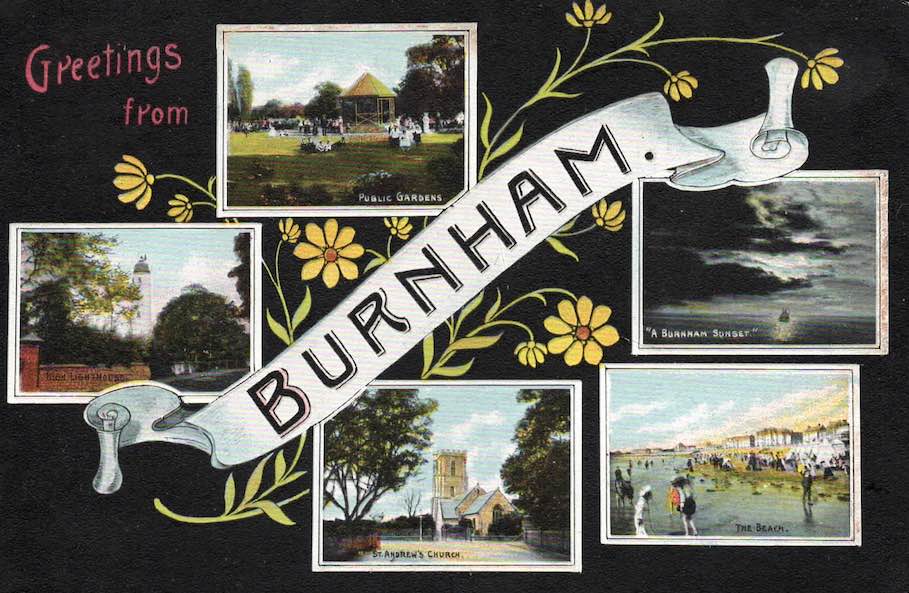
Follow this link for illustrations of publicity posters / cards
CERTIFICATE GRANTING THE TOWN COAT OF ARMS
Dated 1961.
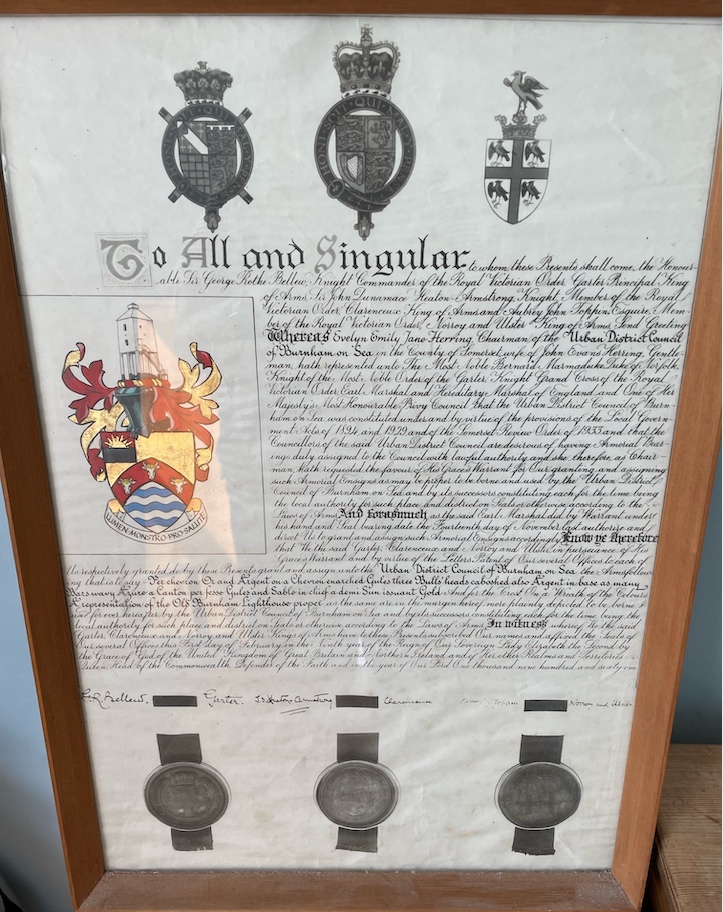
Return to Home Page

